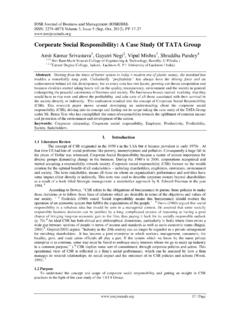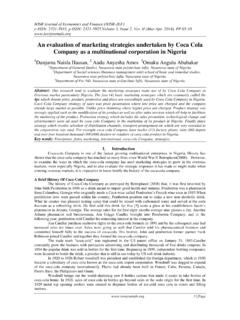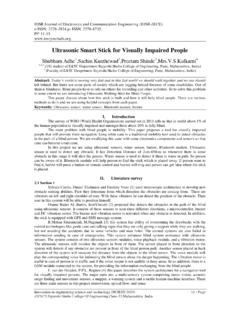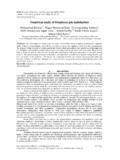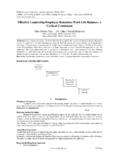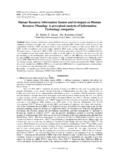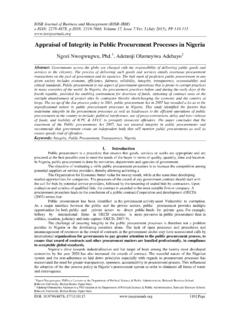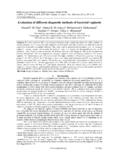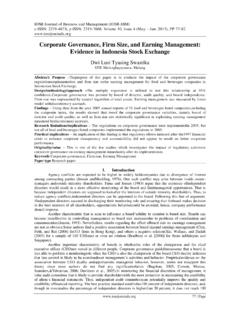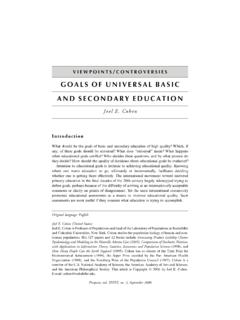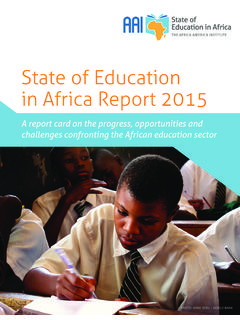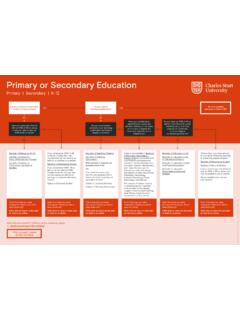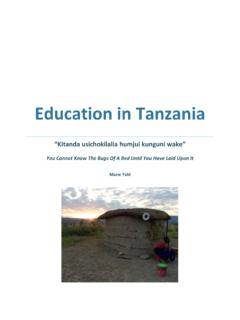Transcription of Policies On Free Primary And Secondary Education In East ...
1 IOSR Journal Of Humanities And Social Science (IOSR-JHSS) Volume 19, Issue 1, Ver. V (Jan. 2014), PP 11-20 e-ISSN: 2279-0837, p-ISSN: 2279-0845. 11 | Page Policies On Free Primary And Secondary Education In East Africa: Are Kenya And Tanzania On Course To Attain Education For All (Efa) Goals By 2015? John Aluko Orodho1 Associate Professor of Education and Research, Department of Curriculum Studies, School of Education , Kenyatta University, Kenya Abstract: This paper provides a comparative perspective of two of the three East African Countries Policies for expanding access to Education , particularly with regard to equity and quality of basic Education in Kenya and Tanzania.
2 Against the background of the fast approaching deadline of 2015 for attaining Education for All (EFA), the paper provides a brief review of the Policies in light of countries own stated goals alongside the broader international agendas set by the World Forum on EFA. It is concerned with two questions: What were the politics and underpinning philosophy surrounding the formulation of the Policies in Kenya and Tanzania and have the Policies changed over time, and if so why? What are the critical emerging challenges inhibiting the attainment of equity and quality of Education in the two countries? The source of data for the paper was a combination of Secondary data through desk literature review and Primary data from studies conducted in some regions in the two countries, particularly in North Eastern Province of Kenya and Shinyanga Region in Tanzania.
3 The major finding is that tremendous quantitative growth has occurred in access to Primary and Secondary Education in the two countries. Nonetheless, Education in these countries have been fraught with nearly similar unique multifarious and intertwined challenges of providing Education , resulting in marked and severe regional and gender disparities in access to, and low quality of Education . The two countries have put in place a series of educational interventions and drives including free Primary Education and subsidized Secondary Education , as well as bursaries for the poor needy learners that are yielding slow but positive progress towards the attainment of EFA goals.
4 It is recommended that in order to attain EFA goals by 2015, these efforts should be accelerated and intensified with a view to reversing regional and gender disparities keeping in mind the fact that the deadline for the attainment of EFA goals is fast approaching and therefore making it urgent to translate the Education Policies into practice rather that the current rhetoric chimera. Key Words: Education Policies , equity, access, quality, practical Policies , regional and gender disparities, Education for all, rhetoric chimera (EFA) [350 words] I. Introduction Background and context The Kenya and Tanzania are among the three East African countries that are often held up as countries in Sub-Saharan Africa that have succeeded in the implementation of free Primary Education which is viewed as the first step towards achieving Education for All (EFA) and some of the Millennium Development Goals (MDGs) (Oketch & Rollestone, 2007, Republic of Kenya, 2012, Republic of Tanzania, 2010).
5 In both countries, the implementation of free Primary Education (FPE) policy is leading to new Policies for access to Secondary Education and ironically, in the case of Tanzania, to a decline in Primary enrolment (Oketch & Roselleston, 2007), and in the case of Kenya, an exponential growth in Primary school enrollment (Republic of Kenya/ UNESCO, 2012, United Republic of Tanzania, 2010; World Bank, 1999, 2012). The desire for widened participation in Education was one of the pillars for the fight towards independence ,and indeed , perpetuated colonial rule that had existed in East Africa before independence in the 1960s (Ngware , Ezeh, Oketch Oketch & Rolleston, 2007; Oketch & Ngware, 2012).
6 Even as East African countries were preparing for independence, ensuring that the learners were educated and the need for critical mass of leaders who would bear the burden of leadership was in the mind of colonial administration and Education was the conduit to do this ( Oketch & Ngware,2012). The challenges of Education were enormous and so were those of development, but Education was placed at the centre of modernization and seen as the modernizing catalyst (UNESCO, 1961; Njeru & Orodho, 2003; Republic of Kenya, 2012). Indeed, in the EAST African Region, independence and Education were intricately intertwined (Oketch & Rolleston, 2007; Republic of Kenya, 2012; United Republic of Tanzania, 2010).
7 When independence was finally attained by each of the East African countries, Education was declared a priority and promoted as the means of developing the most needed human resource to run the state institutions Policies On Free Primary And Secondary Education In East Africa: Are Kenya And Tanzania On 12 | Page and spur private sector development (Nyerere, 1967; Njeru & Orodho, 2003; Oketch & Ngware, 2012). Several Policies were adapted to accelerate expanded access to Africans who had been excluded by the colonial system among them was the scrapping of Standard four examinations, commonly known as common entrance examinations (CEE) that was common in the three East African countries of Kenya, Uganda and Tanzania, thus consolidating the examination system into one uninterrupted seven years of Primary Education (Oketch & Ngware, 2012).
8 There is little doubt, therefore, that Kenya and Tanzania have common characteristics and historical backgrounds regarding access to Education . At all educational levels in the two countries, access had historically been limited to few individuals during the colonial period and hence the countries faced similar educational and literacy challenges following political independence in the 1960s( Republic of Kenya,1964; Nyerere,1967). Kenya declared a campaign for Universal Primary Education (UPE) free of charge as a long-term objective in 1963 following the setting up of the Ominde Commission in 1964 ( Republic of Kenya, 1964).
9 Tanzania followed suit in 1967. Nonetheless, the two countries have had different experiences with the implementation of both UPE in the 1960s and FPE in the1990s and have different philosophies underpinning their Education expansion more generally (Republic of Kenya, 1988; United Republic of Tanzania, 2008a, 2008b). Sharing common borders, the two countries together with Uganda came together to form the East African Community (EAC), a loose federation as a political vehicle to pursue common goals in the 1960s. The community broke down in 1977 following philosophical differences in their development strategies. Tanzania followed a socialist model of development while Kenya adhered to capitalism in practice (although referred to African socialism in development strategy policy documents) generally (Republic of Kenya,1964, Nyerere,1967).
10 On being faced with similar challenges, partly as a result of Policies of economic liberalization under Structural Adjustment Programmes (SAPs), the EAC was revived in the 1990s to provide a common platform from which to address common problems. To date, this bond has been growing from strength to strength World Bank, 2008, 2010, and 2012). While FPE is often associated with Jomtien and Dakar conferences of 1990 and 2000, respectively, which set the current EFA targets, the idea of UPE in the two East African countries is traceable to the 1961 Conference of African States on the Development of Education in Africa, held in Addis Ababa (UNESCO, 1961; Republic of Kenya, 1964; Bogonko, 1992; Oketch & Ngware, 2012).
